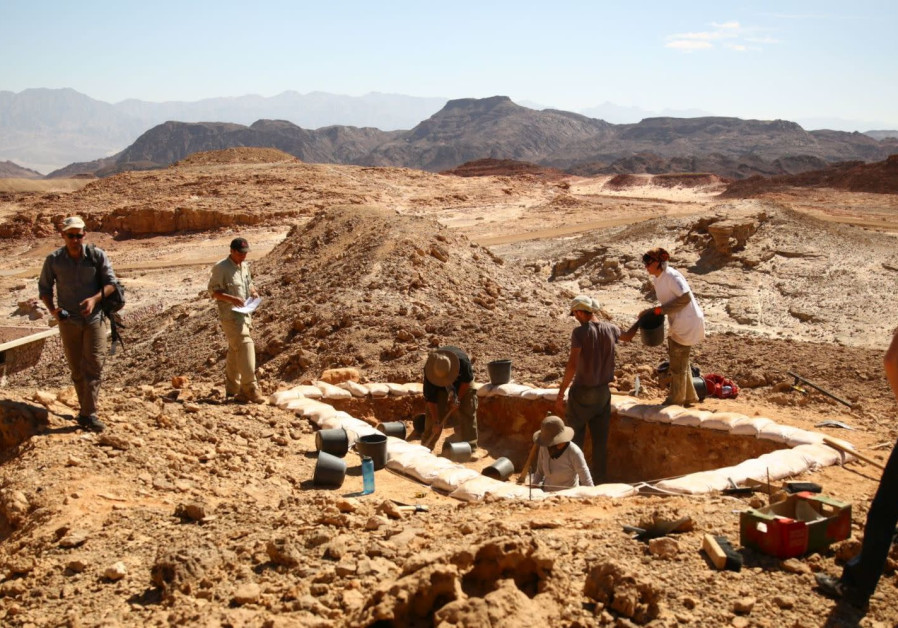ISRAELI RESEARCHERS IDENTIFY BIBLICAL KINGDOM OF EDOM

The biblical kingdom of Edom has always been a significant puzzle for biblical archaeology. Although evidence is supplied in the Bible, the archaeological record has always had trouble interpreting the text, which said that it existed as a kingdom long before the kings of Israel.
But research has uncovered the untold story of a thriving and wealthy society in the Arava Desert – in parts of Israel and Jordan – that existed during the 12th-11th centuries BCE.
“Using technological evolution as a proxy for social processes, we were able to identify and characterize the emergence of the biblical kingdom of Edom,” explained Tel Aviv University’s Prof. Ezra Ben-Yosef, who led the study with Prof. Tom Levy of the University of California, San Diego. “Our results prove it happened earlier than previously thought and in accordance with the biblical description.”
According to the study, which was published on Wednesday on the site of the scientific journal PLOS ONE, the kingdom’s wealth appears to have been built on a “hi-tech network” of copper, the most valuable resource in the region at the time. Copper was used in ancient times to craft weapons and tools, and the production process for copper is incredibly complex.
“Copper smelting was essentially the hi-tech of ancient times,” Ben-Yosef told The Jerusalem Post.
Using a methodology called the punctuated equilibrium model, the research team analyzed findings from ancient copper mines in Jordan and Israel to create a timeline of the evolution of copper production from 1300-800 BCE. The investigation found a significant decrease of copper in the slag – the waste of copper extraction by smelting – at the Arava site, implying that the process became more efficient and streamlined.
Researchers say the more efficient process was a result of the military invasion of Pharaoh Shoshenq I of Egypt (the biblical “Shishak”), who sacked Jerusalem in the 10th century BCE. Rather than result in destruction in the region, the researchers argue that it instead sparked a “technological leap” in copper production and trade.
“We demonstrated a sudden standardization of the slag in the second half of the 10th century BCE, from the Faynan sites in Jordan to the Timna sites in Israel, an extensive area of some 2,000 sq.km., which occurred just as the Egyptians entered the region,” Ben-Yosef said. “The efficiency of the copper industry in the region was increasing. The Edomites developed precise working protocols that allowed them to produce a very large amount of copper with minimum energy.”
However, as Egypt was a weaker power at this time, it is unlikely that it had control over the copper trade, allowing it to remain a local enterprise. Ben-Yosef explained that Egypt was primarily an importer of goods at the time, so it had an interest in streamlining efficiency in the region.
In fact, this was not the only new innovation introduced to the region by the invasion of Shoshenq I – the camel was first introduced to the region at this time as well.
“Our new findings contradict the view of many archaeologists that the Arava was populated by a loose alliance of tribes, and they’re consistent with the biblical story that there was an Edomite kingdom here,” explained Ben-Yosef of TAU’s department of archaeology and ancient Near Eastern cultures. “A flourishing copper industry in the Arava can only be attributed to a centralized and hierarchical polity, and this might fit the biblical description of the Edomite kingdom.”
While archaeology had never doubted the existence of the Edomite kingdom, it was widely assumed to have emerged around the late eighth century BCE in the Edomite Plateau, located in Jordan near Petra and southeast of the Dead Sea.
“Before they built their capital in the plateau, the Edomites were a complex and organized kingdom, but they were still nomadic,” said Ben-Yosef. “They dwelled in tents. They didn’t have villages or cities, but they had cemeteries and smelting sites.”
The Edomites eventually did settle in cities on the plateau and built settlements along the trade routes, but these findings prove that they possessed a centralized system of organization long before they settled there.
Read more: The Jerusalem Post
